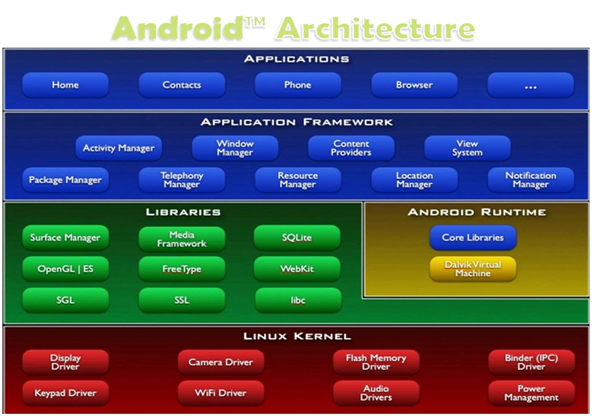Linux kernel:
The android uses the powerful Linux kernel and it supports wide range of hardware drivers. The kernel is the heart of the operating system that manages input and output requests from software. This provides basic system functionalities like process management, memory management, device management like camera, keypad, display etc the kernel handles all the things. The Linux is really good at networking and it is not necessary to interface it to the peripheral hardware. The kernel itself does not interact directly with the user but rather interacts with the shell and other programs as well as with the hard ware devices on the system.
Libraries:
The on top of a Linux kennel there is a set of libraries including open source web browser such as webkit, library libc. These libraries are used to play and record audio and video. The SQLite is a data base which is useful for storage and sharing of application data. The SSL libraries are responsible for internet security etc.
Android Runtime:
The android runtime provides a key component called Dalvik Virtual Machine which is a kind of java virtual machine. It is specially designed and optimized for android. The Dalvik VM is the process virtual machine in the android operating system. It is a software that runs apps on android devices.
The Dalvik VM makes use of Linux core features like memory management and multithreading which is in a java language. The Dalvik VM enables every android application to run it own process. The Dalvik VM executes the files in the .dex format.
Application frame work:
The application frame work layer provides many higher level services to applications such as windows manager, view system, package manager, resource manager etc. The application developers are allowed to make use of these services in their application.
Applications:
you will find all the Android application at the top layer.You will write your application to be installed on this layer only.Examples of such application are Contacts Books,Browser,Games etc...
.

No comments:
Post a Comment